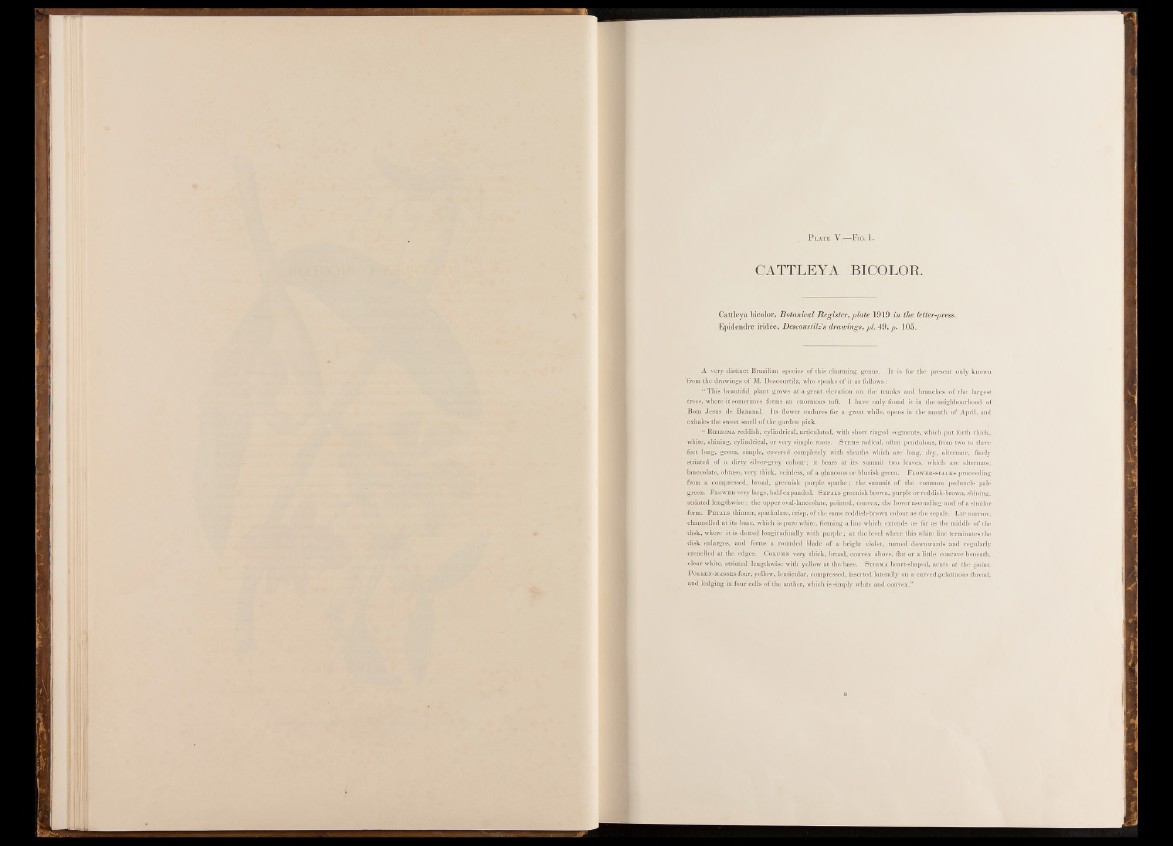
P late V.—F ig. 1.
CATTLEYA BICOLOR.
Cattleya bicolor, Botanical Register, plate 1919 in the letter-press.
Epidendre iridee, Descourtilzs drawings, pi. 49, p. 105.
A very distinct Brazilian species of this charming genus. It is for the present only known
'from the drawings of M. Descourtilz, who speaks of it as follows :
“ This beautiful plant grows at a great elevation on the trunks and branches of the largest
trees, where it sometimes forms ah enormous tuft. I have only found it in the neighbourhood of
Bom Jesus de Bananal. Its flower endures for a great while, opens in the month of April, and
exhales the sweet smell of the garden pink.
“ Rhizoma reddish, cylindrical, articulated, with short ringed segments, which put forth thick,
white, shining, cylindrical, or very simple roots. Stems radical, often pendulous, from two to three
feet long, green, simple, covered completely with sheaths which are long, dry, alternate, finely
striated of a dirty silver-grey colour; it bears at its summit two leaves, which are alternate,
lanceolate, obtuse, very thick, veinless, of a glaucous or blueish green. Flower-stalks proceeding
from a compressed, broad, greenish purple spathe; the summit of the common peduncle pale
green. Flower very large, half-expanded. Sepals greenish brown, purple or reddish-brown, shining,
striated lengthwise : the upper oval-lanceolate, pointed, convex, the lower ascending and of a similar
form. P etals thinner, spathulate, crisp, of the same reddish-brown colour as the sepals. Lip narrow,
channelled at its base, which is pure white, forming a line which extends as far as the middle of the
disk, where it is dotted longitudinally with purple; at the level where this white line terminates the
disk enlarges, and forms a rounded blade of a bright violet, turned downwards and regularly
crenelled at the edges. Column very thick, broad, convex above, flat or a little concave beneath,
clear white, striated lengthwise with yellow at the base. Stigma heart-shaped, acute at the point.
Pollen-masses four, yellow, lenticular, compressed, inserted laterally on a curved gelatinous thread,
and lodging in four cells of the anther, which is simply white and convex.”